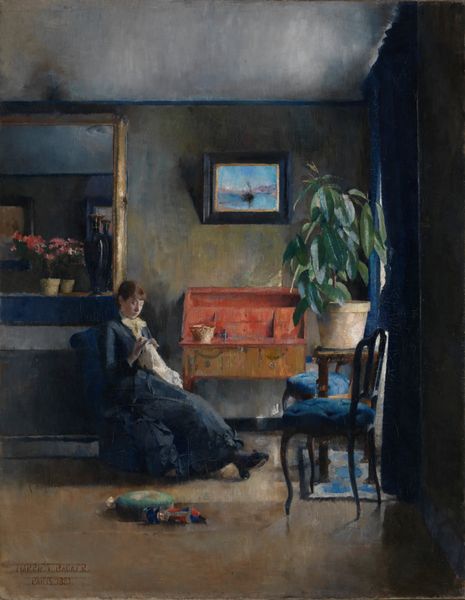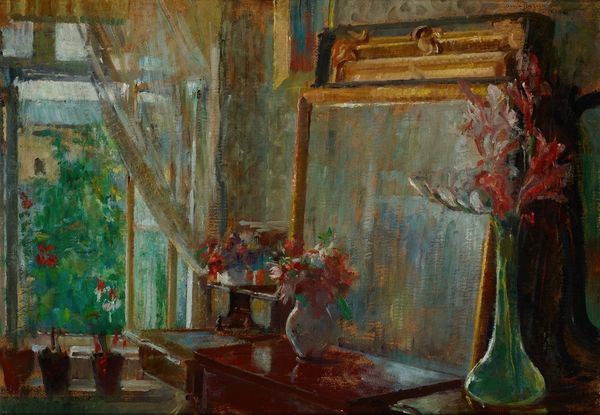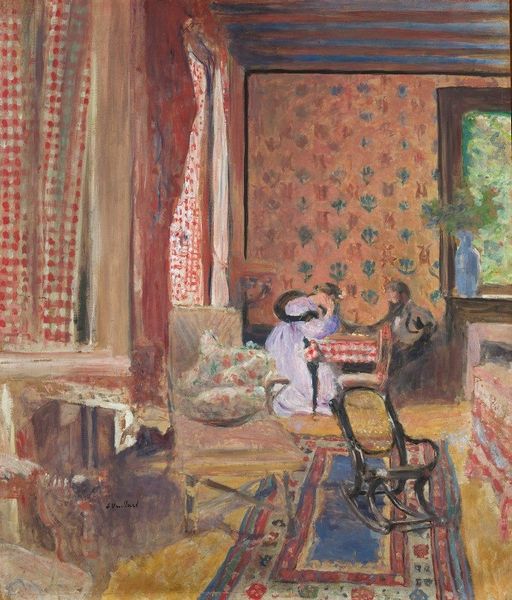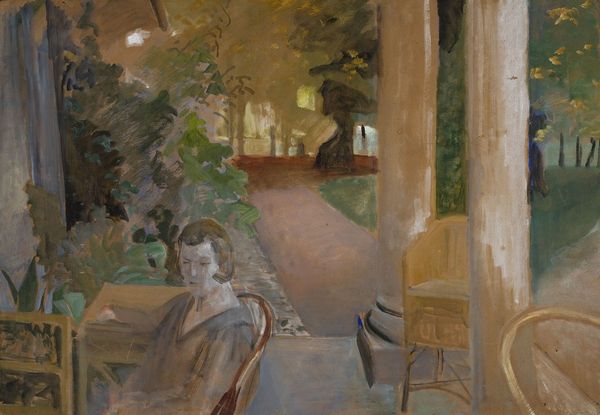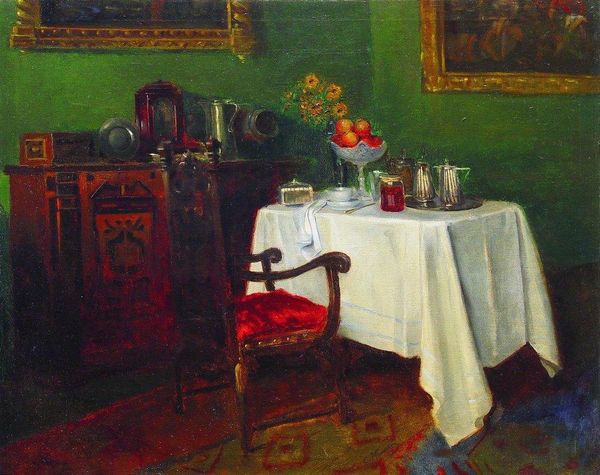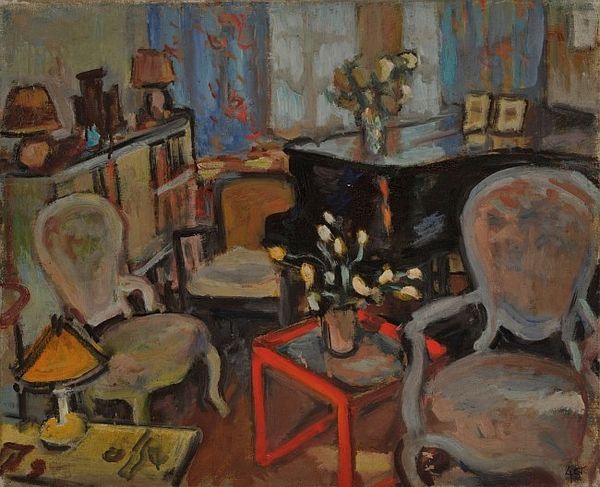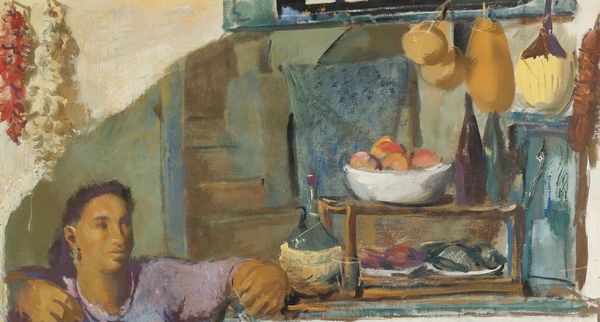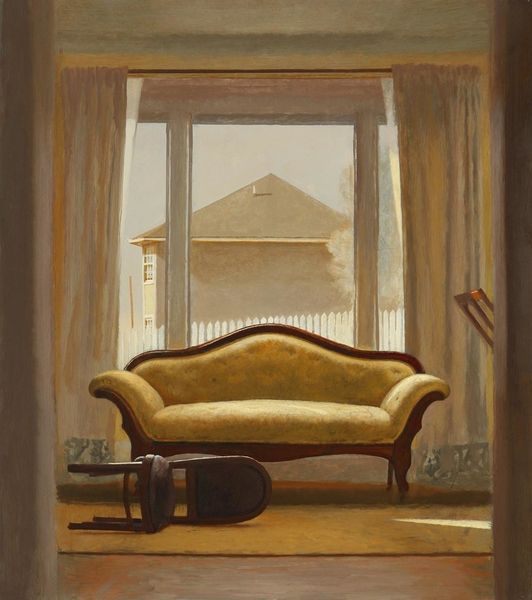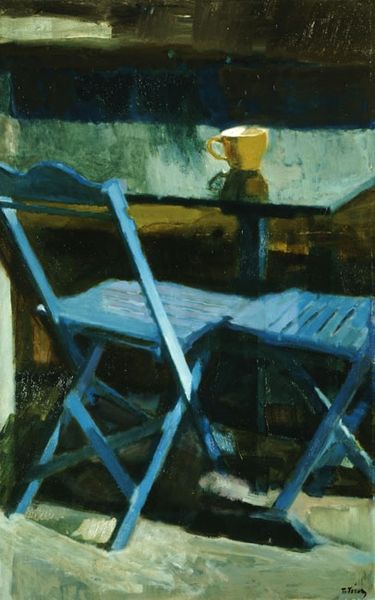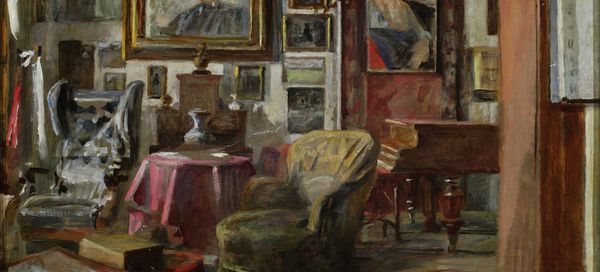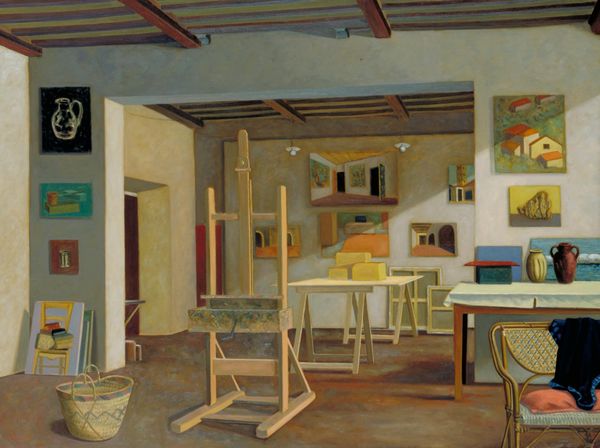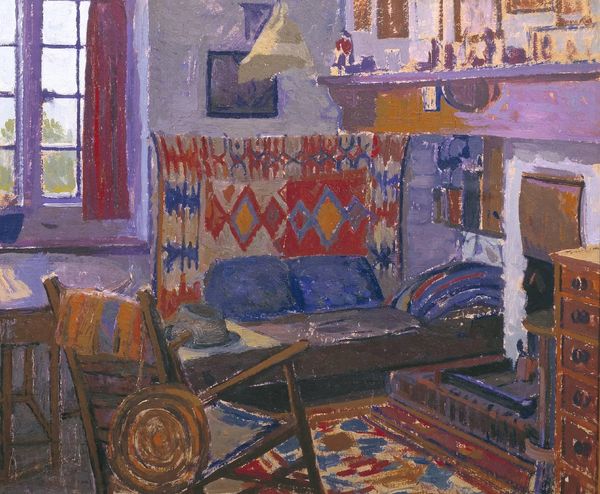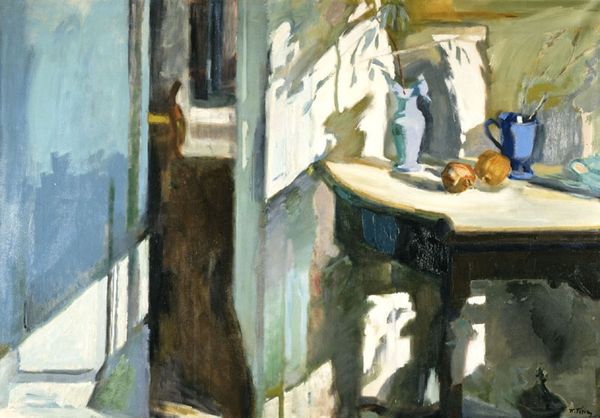
Copyright: Public Domain: Artvee
What is unconventional about this painting? Why is it so unexpected? Painted in 1903, ‘Salon im Haus auf der Hohen Warte’ is an oil-on-canvas work by the Austrian artist Carl Moll (1861-1945). The title translates to ‘Salon in the house on the Hohe Warte’, a hill near Vienna. The painting depicts a view of a dining room with whitewashed walls, complete with blue details. We see several majestic chairs, furnished in opulent blue velvet. Towards the left side of the canvas, Moll has included the figure of a young girl sitting on a chair. She looks in admiration towards an older woman. The framing and composition of this painting is surprising. The focus is not on the two figures. They are relegated towards the left side of the canvas, away from the centre. The woman herself is partially covered by a wall, which juts out into the foreground. We almost feel as though we are secretly watching the pair from around the corner of the wall! Carl Moll was one of the most well-known artists associated with the Vienna Secession. Founded in 1897, the Secession rejected traditional academic art values and wished to unite the separate mediums of painting, architecture, and design. In 1905, however, Moll left the Secession. He became closely associated with Nazism, and eventually died by suicide when Nazi forces began to decline in 1945. Moll’s painting is characterised by his focus on realistic lighting, as well as his pointillist technique. Pointillism refers to tiny dots of colour applied directly to the canvas. It was pioneered by the French Impressionists Georges Seurat and Camille Pissarro in the nineteenth century.
Comments
No comments
Be the first to comment and join the conversation on the ultimate creative platform.
